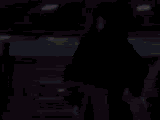Where did I get those numbers? I had to research on this back in the 90's but I was more interested in the comparitive value of video formats for historical preservation. I felt the 3/4 screen method of measuring resolution too confusing for my clients... mostly members of historical commissions and societies.
But I did look it up now and NTSC has a theoretical horizontal resolution of 452 not 440. Oops. Good... now I can correct whatever I wrote then. That's based on bandwidth calculations from
Not sure what my time is. I'm older than NTSC color LOL. Still think FP PixelVision has it beat... It came out in 1987, had 120x90 pixel screen resolution and used used audio cassettes. http://en.wikipedia.org/wiki/PXL-2000. Imagine what these things are getting on eBay!
But I did look it up now and NTSC has a theoretical horizontal resolution of 452 not 440. Oops. Good... now I can correct whatever I wrote then. That's based on bandwidth calculations from
The horizontal resolution defines the capability of the system to resolve vertical lines. It depends on the camera and display capabilities, as well as the bandwidth and the high-frequency amplitude and phase response of the transmission medium. In a 4:3 aspect ratio television system, it is expressed as the number of distinct vertical lines, alternately black and white, which can be satisfactorily resolved in three quarters of the width of a television screen. A system with a horizontal to vertical aspect ratio of 4:3, as in conventional television, needs to allow for (4:3) NV horizontal details to be resolved over the width of the display.
In the NTSC system, this results in 339 × 4/3 ≈ 452 horizontal details to be resolved. Due to the limited system bandwidth, exploring a pair of contiguous white and black fine details (line-pair) results in a sinewave with a positive half-wave corresponding to the white detail and a negative half-wave corresponding to the black detail. Scanning 452 horizontal details results in an electrical signal with 226 complete cycles during the active horizontal scanning line.
In the NTSC system, this results in 339 × 4/3 ≈ 452 horizontal details to be resolved. Due to the limited system bandwidth, exploring a pair of contiguous white and black fine details (line-pair) results in a sinewave with a positive half-wave corresponding to the white detail and a negative half-wave corresponding to the black detail. Scanning 452 horizontal details results in an electrical signal with 226 complete cycles during the active horizontal scanning line.




Comment